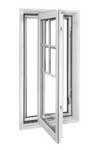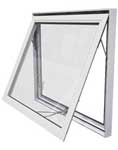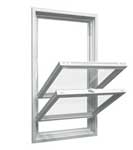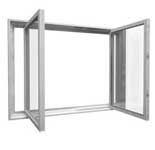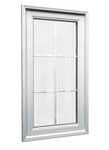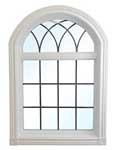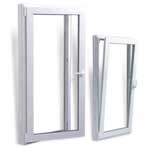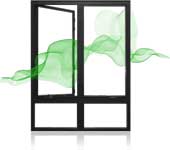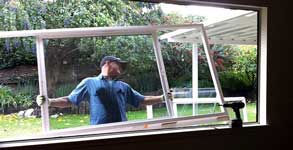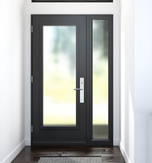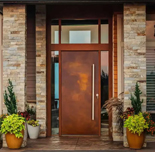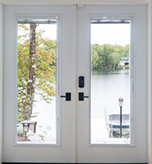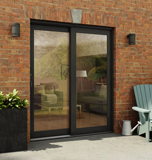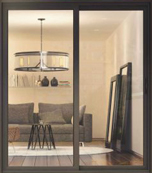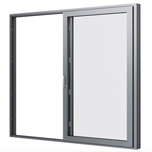Bay and bow windows are popular architectural features renowned for their ability to enhance natural light, create additional space, and improve the aesthetic appeal of any room. While these two window styles share similarities in functionality, homeowners should be aware of distinct differences between them before making a decision.
This blog will examine the defining characteristics of bay and bow windows and examine six key differences to help homeowners and architects make informed decisions about their projects.
What is a Bay Window?
A bay window typically comprises three individual windows arranged at angles, extending outward from the exterior wall of a building. The central window, known as the “picture window,” is often larger and flanked by two smaller windows, termed “flanking windows.” This design facilitates a panoramic view and floods the interior space with abundant natural light. Bay windows are popular for their versatility and can seamlessly complement various architectural styles, from traditional to contemporary.
What is a Bow Window?
In contrast, bow windows boast a curved or arched structure comprising four or more windows arranged in a gentle arc. The curvature of bow windows gives them a sense of grace and elegance, making them a popular choice for homeowners seeking to add character and sophistication to their homes. With a broader field of view compared to bay windows, bow windows offer panoramic vistas and increased ventilation, making them ideal for homes in Victorian and Edwardian architectural styles.

The 6 Key Differences Between Bay Windows and Bow Windows
Shape and Structure
Bay windows typically feature three panels that create a larger central pane flanked by two smaller side panes, forming a distinctive angular shape that protrudes from the exterior wall of a building. This angular design adds visual interest to the facade and allows for more dynamic interior spaces, as it often creates cozy alcoves or seating areas by the windows.
On the other hand, bow windows consist of four or more panels, creating a gentle curve that provides a softer aesthetic appeal. This curved structure can lend a sense of fluidity to the exterior of a building and allows for a wider field of view from inside the room.
Number of Panels
Bay windows are characterized by their three-panel configuration, offering a more straightforward design than bow windows, which typically incorporate four or more panels. The increased number of panels in bow windows creates a more pronounced curve, enhancing the window’s architectural elegance. This additional curvature can also result in more natural light entering the room, further accentuating the bow window’s aesthetic appeal.
Space and Size
Bay windows generally offer more floor space and can be larger due to their angular design, providing ample room for seating or decorative purposes. The extended projection of bay windows from the building’s exterior also creates opportunities for interior design enhancements, such as window seats or storage alcoves.
With their curved structure, bow windows may not protrude as far outward and may be better suited for smaller areas or rooms with limited space. However, their curved design can still create an illusion of spaciousness within a room, making them a popular choice for adding visual interest to compact spaces.

Architectural Style
Both bay and bow windows contribute distinctively to a building’s architectural style. Bay windows are often associated with traditional or transitional architectural styles, such as Victorian or Colonial homes, where they enhance the building’s charm and character. Their angular design complements the symmetry and detailing commonly found in these architectural styles.
Conversely, bow windows can complement a broader range of architectural designs, including contemporary and modern aesthetics. Their graceful curve adds a touch of sophistication to a house and can be seamlessly integrated into various architectural contexts.
Ventilation and Airflow
Bay windows typically feature operable side panels that can be opened to allow for ventilation and airflow. This operability provides practical benefits, such as improved indoor air quality and temperature regulation, and enhances the window’s functionality. Residents can enjoy fresh air and natural ventilation while benefiting from the expansive views of bay windows.
In contrast, bow windows may have limited operability due to the curved design and configuration of multiple panels, which can impact airflow within a room. However, strategically placing operable windows or vents can help mitigate this limitation and ensure adequate airflow.
Cost and Installation
The cost and installation process for bay and bow windows can vary based on factors such as size, materials, and complexity of installation. Generally, bay windows tend to be more cost-effective and easier to install due to their more straightforward structure, which requires fewer panels and less intricate framing. This can result in lower labour and material costs, making bay windows an attractive option for budget-conscious homeowners.
In contrast, bow windows may require more labour and materials, potentially leading to higher costs. The increased number of panels and the curved nature of bow windows require more measurements and specialized framing techniques, which can contribute to higher installation expenses. However, despite the potential cost implications, many homeowners consider the aesthetic benefits of bow windows worth the investment.
Conclusion
In conclusion, understanding the benefits and drawbacks of bay and bow windows is crucial for making informed decisions in home design and renovation projects. Whether you prioritize the angular elegance of bay windows or the graceful curvature of bow windows, each style offers unique advantages and considerations. By carefully evaluating factors such as architectural style, space requirements, and budget constraints, you can select the window option that best suits your needs and enhances the beauty and functionality of your home.
Make Eco Choice Windows & Doors your choice for professional installation services.
Eco Choice Windows & Doors is a leading supplier and installer of quality windows and doors. We have been in business for over 15 years, installing windows and doors for many satisfied customers across the province.
We have the knowledge, experience and expertise to recommend the windows and doors that best suit your needs. Simply put, we supply the best quality products, expertly installed and built to enhance energy efficiency throughout the home.
Call us today at (416) 690-9992 or complete our convenient online form to book your free no-obligation consultation to learn more about how we can help you get the front door of your dreams!

